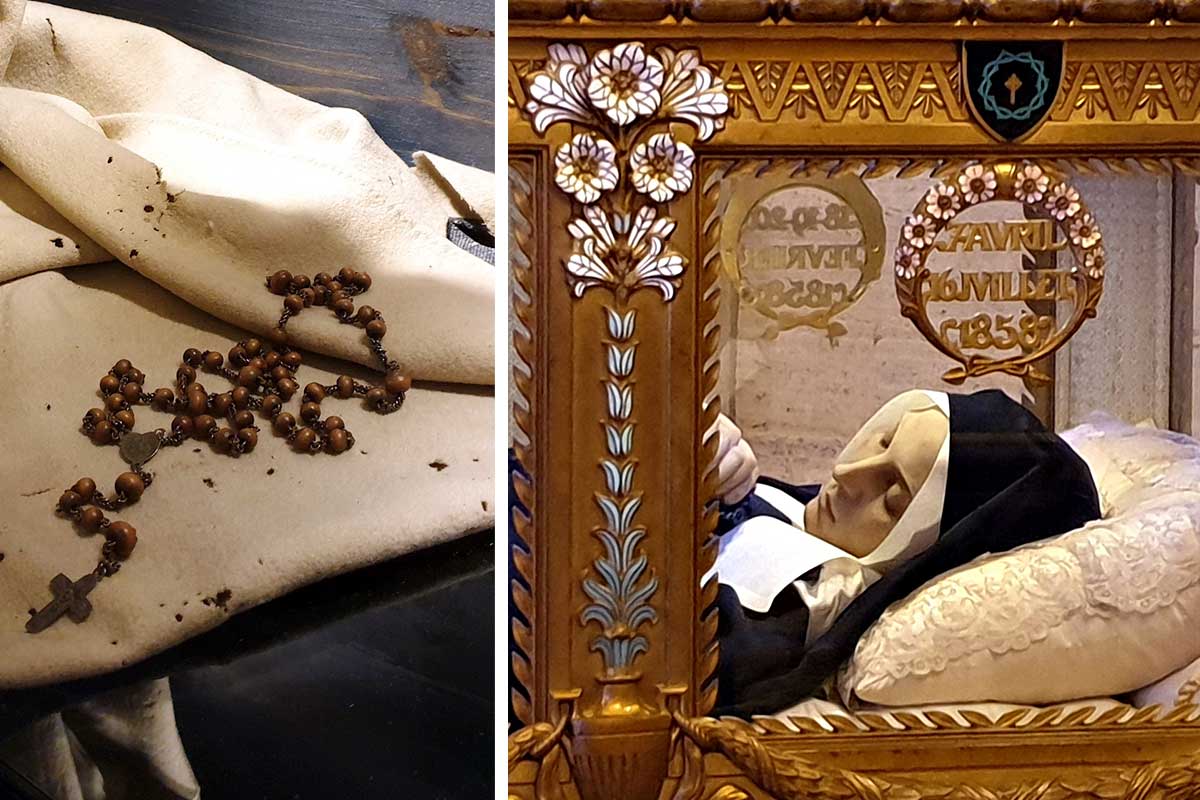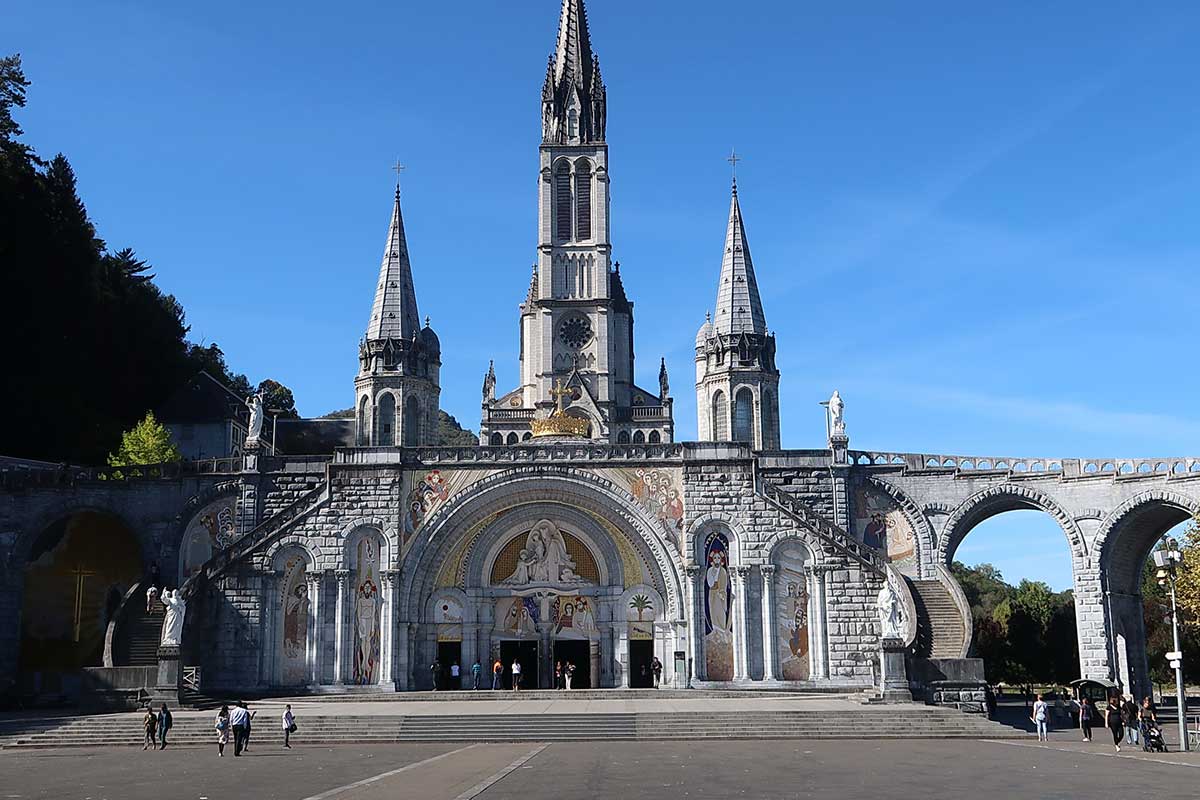St Bernadette: The Simple Girl Who Saw Our Lady

St Bernadette as a young girl. Colourised for The Southern Cross
Lourdes is the third-most popular site of Christian pilgrimage. And it all began in 1858 with St Bernadette, as Günther Simmermacher explains.
Name at birth: Bernadette Soubirous
Religious name: Sr Marie-Bernarde
Born: January 7, 1844, in Lourdes, France
Died: April 16, 1879 (aged 35)
Beatified: 1925
Canonised: 1933
Feast: April 16
Patronages: Illness, poverty, lacemakers, shepherds, people ridiculed for their faith, France
When the 14-year-old Bernadette Soubirous saw an apparition of a woman who’d declare herself “The Immaculate Conception”, she had no idea that her little hometown of Lourdes, in the French Pyrénées near the border with Spain, would one day become the world’s third-biggest site of Christian pilgrimage — and she a canonised saint.
Born on January 7, 1844, the eldest of the nine children of the miller François and the laundress Louise Soubirous, Bernadette was a sickly child, contracting cholera as a toddler and suffering severe asthma for the rest of her life. Her fragile health was not aided by the impoverished conditions in which her family often lived, and it disrupted her education. Standing at only 1,4m, she was physically unimposing, and her lack of education led people to believe that she was a simpleton, which was an unfair characterisation.
So when Our Lady chose to appear to this unremarkable girl, who spoke barely any French (her mother tongue was the local Occitan dialect) and came from a family that was living in a disused jail cell known as La Cachot (the dungeon), many people were incredulous. But just as God had picked ostracised shepherds and disenfranchised women to announce the birth and resurrection of the Lord, so has the Blessed Virgin often chosen to appear to unlikely candidates. And so, on February 11, 1858, she appeared to Bernadette while the girl was gathering firewood with her sister Toinette and a friend near the grotto of Massabielle.
It was the first of 18 apparitions — 15 of them taking place in the space of three weeks — which lasted until July 16. In none of them did the apparition say she was the Blessed Virgin, and Bernadette never claimed it so. She referred to the apparition as “aquero”, a local dialect term which can be loosely interpreted as “that of which I’m speaking”. But the lady’s declaration, in the Occitan dialect, that she was the Immaculate Conception left no doubt that it was indeed Our Lady. The apparitions divided the community of Lourdes. Even Bernadette’s mother was at first embarrassed by her daughter. Some thought Bernadette was insane and wanted her committed to an asylum.
Sceptical parish priest
Abbé Dominique Peyramale, the parish priest to whom Bernadette reported the lady’s request that a chapel be built at the site of the apparition, was initially highly sceptical of her reports of the apparitions (wisely so). He certainly was irritated when Bernadette reported that this impertinent apparition wanted a chapel to be built for her. But he later came to accept St Bernadette’s reports as true and took the girl under his protection.
The watershed, as it were, was on February 25. The lady instructed Bernadette “to drink of the water of the spring, to wash in it and to eat the herb that grew there”. Bernadette did as told. In front of startled witnesses who thought the girl had lost her mind, she scratched in the ground and then washed in the emerging muddy water and drank from it. But when the people returned to the site the next day, the fresh spring which Bernadette had dug up with her hands issued clear water — as it does to this day, curing people of many ailments.
After rigorous interrogation of Bernadette, the Catholic Church approved the apparitions as authentic in 1862. A chapel was built, but soon that wasn’t enough to hold the pilgrims who came to Lourdes for the miraculous waters. Today there are two huge basilicas, built on top of one another, plus a massive underground basilica which can hold 25000 people, and a modern church dedicated to St Bernadette in the Lourdes sanctuary.

Left) St Bernadette’s rosary. (Right) St Bernadette’s incorrupt body in Nevers
Becoming a nun
Bernadette never liked the attention her experience was attracting, and sought to become a nun. After the Carmelites rejected her for health reasons, she joined the Sisters of Charity of Nevers — who had taught her to read and write — in 1866, almost to the day eight years after the final apparition. She was given the name Marie-Bernarde, which she felt was a welcome escape from being Bernadette the Visionary.
She moved to the congregation’s motherhouse in Nevers, 700km from Lourdes in central France, which she would never leave, even when the basilica of the Immaculate Conception was consecrated in Lourdes in 1876.
At Nevers, her superiors were keen to cut her down to size in case the already famous visionary might get ideas of being a celebrity. She took on humble jobs, working as a cleaner in the infirmary. Later she was a sacristan, making beautifully embroidered vestments and altar cloths. Though she never traded on her celebrity, it nevertheless provoked hostile jealousy from some fellow nuns. But even when she suffered degradations — especially at the hands of her novice mistress, Sr Marie-Thérèse Vauzou, who did not believe in the apparitions — Bernadette never lost her humility.
But she could also be brutally candid. When the artist who sculpted a statue of Our Lady of Lourdes, based on Bernadette’s description, presented the finished artwork, she said: “It’s not her!” The poor artist hadn’t managed to capture the smile accurately. But how do you describe a smile accurately for reproduction?

The Lourdes sanctuary.
Final illness
Bernadette’s health never improved.
Tuberculosis of the lungs and bones eventually confined her to bed for several months. On April 16, 1879, the Wednesday after Easter, she died at the age of 35. Her final words were: “Holy Mary, Mother of God, pray for me, a poor sinner, a poor sinner.”
Bernadette’s body was first interred in the chapel of St Joseph in the peaceful grounds of St Gildard’s convent in Nevers. Since then, her body has been exhumed three times. Every time, it was found to be incorrupt. After the final exhumation and before relocation to the chapel, wax imprints of her face and hands were made, to cover the blackened skin. St Bernadette now rests in a glass casket in the convent’s chapel.
Pope Pius XI beatified Bernadette in 1925, and canonised her on December 8, 1933, the feast day of the Immaculate Conception. Her feast day is April 16.
There is a remarkable coda to the story of St Bernadette. The two principal men in her life were her father François, and her mentor, Fr Peyramale. The priest died on September 8, 1877, the feast of Our Lady’s Nativity. François died on December 8, 1871, the feast of the Immaculate Conception—the name by which the Blessed Virgin revealed herself to Bernadette.
Published in the April 2022 issue of the Southern Cross magazine
- The Chosen’s Mother Mary: I loved washing Jesus’ hair - December 5, 2025
- Book Review: Benedict, Baltimore and the Barbary Pirates - December 4, 2025
- Christmas Began in July - December 1, 2025





